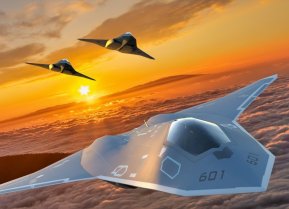Russia's Dangerous Borei AM-Class Missile Submarine Fleet Keeps Expanding
Russia is set to enhance its naval nuclear triad with the addition of two Borei AM-class strategic nuclear ballistic submarines, marking a significant step in its naval modernization efforts.
Summary: Russia is set to enhance its naval nuclear triad with the addition of two Borei AM-class strategic nuclear ballistic submarines, marking a significant step in its naval modernization efforts. Scheduled to have their keels laid at the Sevmash shipyard this year, these submarines represent the modernized Project 955AM, with contracts signed in 2021. Upon completion, the Russian Navy's Northern and Pacific Fleets are expected to each operate six Borei-class submarines, bolstering Russia's strategic deterrence capabilities. The Borei-class, including current and upcoming units like the Knyaz Pozharsky, is designed to replace several Cold War-era classes, offering advanced features such as reduced detectability, enhanced maneuvering, and powerful armament including 16 Bulava ballistic missiles. These submarines are pivotal to maintaining Russia's naval nuclear deterrence, with the fleet playing a central role until at least 2040.
Russia Advances Its Naval Might with New Borei AM-Class Submarines
The keels for two Borei AM-class strategic nuclear ballistic submarines will be laid at the Sevmash shipyard sometime this year, Russian state media reported March 27. The vessels will eventually enter service with the Russian Navy's Northern and Pacific Fleets, enhancing the Kremlin's nuclear triad.
"This year, keels for modernized Project 955AM Borei-AM nuclear subs will be laid under contracts inked in 2021," a source in the Russian defense industry told Tass.
The unnamed source added that both the Northern and Pacific Fleets are expected to have six Borei-class nuclear boats in service by the end of the decade, including those now under construction.
Two Borei and Borei-A lead submarines, the Yury Dolgoruky and the Knyaz Vladimir, are currently in service with the Russian Navy’s Northern Fleet, while the Pacific fleet has four such submarines in service, including the Alexander Nevsky, the Vladimir Monomakh, the Knyaz Oleg and the Generalissimus Suvorov.
Last month, the fifth upgraded Borei-A nuclear-powered ballistic missile submarine was floated out at Sevmash. The Knyaz Pozharsky – named after the Russian prince Dmitri Pozarsky, who led during the Polish-Muscovite War (1611-1612) – is expected to begin its sea trials in the coming months before being commissioned to the Northern Fleet, likely sometime next year.
Post-Cold War Submarines from Russia
Russia’s Borei-class boats were developed to replace the Cold War-era Project 941 Akula-class subs (NATO reporting name "Typhoon”), as well as boats in the Murena, Murena M, Kalmar, and Delfin classes. The Project 955 Borei and Project 955A Borei A submarines are significantly smaller and operate with a smaller crew.
Despite having half the displacement of the Akula class, the Russian Borei-class submarines can carry a similar number of missiles. When all of the planned dozen Borei and Borei A-class submarines are delivered sometime after 2031, they will make up the backbone of Russia's naval nuclear deterrence. Thy will replace the outgoing Kalmar-class subs in the Pacific Fleet and the Delfin-class subs sailing with the Northern Fleet.
The fourth-generation class of Russian submarines is a significant upgrade. The Project 995A strategic missile-carrying submarines are reported to be quieter and to feature improved maneuvering, depth, and armament control systems. The boats are also less detectable to sonar than their predecessors. Another notable advancement is a pump jet propulsion. Project 995AS is the first Russian submarine with such a system.
All of the boats of the Borei A class are reported to be equipped with either one or two towed sonar arrays stored in tubes inside vertical rudders that retract inward. There is also a noticeable bulge running alongside the hull for much of its length, which is likely a flank sonar array. This could allow the Borei A class to scan the ocean with sonar in both the port and starboard directions.
The submarines are armed with 16 Bulava ballistic missiles. This three-stage, solid-propellant, sea-launched variant of the Topol-M has a range of over 8,300 kilometers. Each of the missiles can carry six to 19 nuclear multiple warheads, yielding 100 to 150 kilotons apiece. The Bulava can be further fitted with 10 to 40 decoy warheads. In addition, the Project 995A submarines are also furnished with 533 mm torpedo tubes.
A total of fourteen Project 995/Project 995A submarines were planned. As of this year, seven have been completed and six are now in service, while an additional three are reportedly under construction. The Russian SSBNs will form a core component of the Russian nuclear triad until at least 2040, and likely beyond.
Author Experience and Expertise: Peter Suciu
Peter Suciu is a Michigan-based writer. He has contributed to more than four dozen magazines, newspapers, and websites with over 3,200 published pieces over a twenty-year career in journalism. He regularly writes about military hardware, firearms history, cybersecurity, politics, and international affairs. Peter is also a Contributing Writer for Forbes and Clearance Jobs. You can follow him on Twitter: @PeterSuciu.


